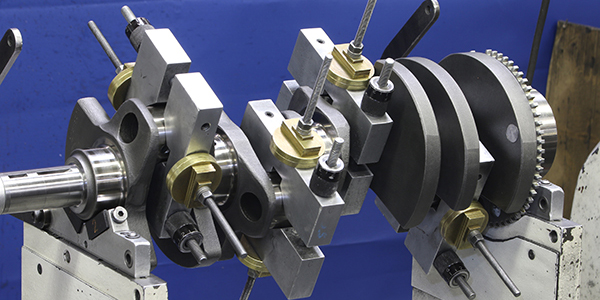A revolving motor (otherwise called the Wankel motor or Wankel rotational motor) is a gas powered motor developed in 1954 by the German mechanical architect Felix Heinrich Wankel as an option in contrast to the exemplary responding motor.
After some specialized enhancements made by engineer Hanns Dieter Paschke, the revolving Wankel motor was interestingly introduced to trained professionals and the press in a gathering of the German Engineers’ Union in Munich in 1960.
Because of their effortlessness, brilliant ability to-weight proportion just as smooth and very running, Wankel engines were all the rage in the auto and cruiser enterprises during the 1960s. Incredible consideration was gotten by the NSU Motorenwerke AG in August 1967 for the exceptionally present day NSU Ro 80, which had a 115-pull Wankel motor with two rotors. It was the primary German vehicle chose as “Vehicle of the Year” in 1968.
During the following many years, various enormous vehicle makers consented to permit arrangements for improvement of Wankel rotating motors, including Ford, Toyota, Mercedes-Benz, Porsche, Rolls-Royce, and Mazda.
After additional upgrades of the motor, including the arrangement of the pinnacle seal issue, Mazda effectively utilized Wankel engines in its game vehicles RX series until 2012. The mechanical edge of the revolving motors in the car business was featured in the 1991 24 Hours of Le Mans race, as a vehicle controlled by the 4-rotor Mazda 26B motor won the renowned rivalry.
See parts: RX5 Parts
How Rotary Engines Work
A rotating motor is a gas-powered motor that utilizes at least one three-sided rotor to change overpressure made when the air-fuel combination is singed into dynamic energy. Gas volumes shipped in the spaces between the rotor flanks and the lodging on the other hand do four distinct positions: a) Intake; b) Compression; c) Combustion and d) Exhaust. These stages are known as strokes, making the Wankel motor a 4-cycle motor, like the responding Otto motor.
Admission
During this stage, a drop in pressure brought about by the rotor’s movement attracts an air-fuel combination. This combination is drawn around the rotor and constrained into the second stroke of the cycle.
Pressure
As the rotor keeps on turning, the caught (crosshatched) volume contained between the rotor and lodging diminishes, packing the air-fuel combination.
Burning
At the point when the dynamic combination volume is a base, at least one sparkle plugs start burning, causing fast ascents in strain and temperature. The abrupt development of the now vaporous fuel blend sends a power to the capricious through the rotor.
EXHAUST
As the turn continues, the growing gases drive the rotor until the exhaust port is uncovered, delivering them. The exhaust interaction proceeds as the admission port open to start another cycle.
Wankel Engine VS. Cylinder Engine
Because of its plan, the Wankel motor is far lighter, compacted, and less difficult than a traditional cylinder motor. There are neither responding mass nor wrenches, valves, poles or other disappointment inclined, complex parts. Wankel motors contain just three moving parts, which makes them more solid, tough, and upkeep well disposed than their responding competitors. Plus, these moving parts are in constant unidirectional revolution guaranteeing higher working velocities, simplicity of adjusting, and low degree of vibration. With extraordinary ability to estimate and ability to-weight proportions, Wankel motors are irreplaceable in different applications going from the light airplane area through consolidated hotness power units to the marine business.
One of the significant drawbacks of the Wankel motor alludes to its low warm effectiveness. The long, slight, and moving ignition chamber brings about sluggish and fragmented consumption of the fuel combination. This prompts higher fossil fuel byproducts and lower eco-friendliness, contrasted with the cylinder motors. In any case, this downside transforms into an advantage by changing to Hydrogen fuel.
See Details: Mazda Rotary specialist
One more shortcoming of Wankel motors comes from the rotor and pinnacle fixing. Flawed fixing between the edges of the rotor and the lodging – for instance because of wear or lacking divergent power on the lower RPM ranges – can bring about ignition gas spilling into the following chamber.
Since the ignition just happens in one part of the turning motor, there is a high-temperature contrast in two separate chambers. As an outcome, the distinctive extension coefficients of the materials lead to imperfect rotor fixing. Oil utilization is additionally an issue, as oil should be infused into the chambers to add grease and assist with keeping the rotor fixed.
